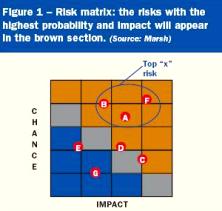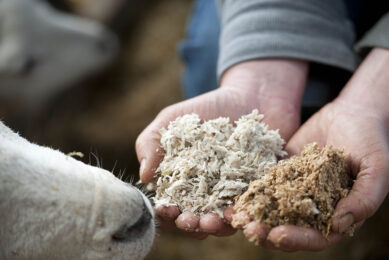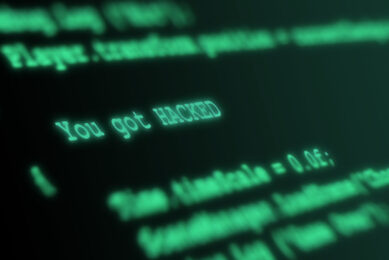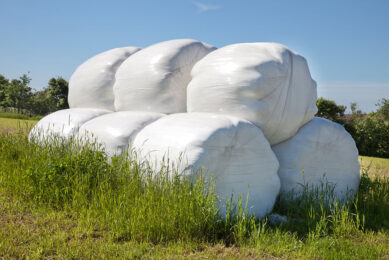Feed scares; how to prepare for the unexpected?

The feed sector has gone through some serious scares lately; from dioxin to melamine and from salmonella to aflatoxins. These scares not only cost money, they also damage the image of the sector. What can be done to prevent it? Feed Tech has put this question to Wilco de Haan, Director Liability at Marsh, eminent insurance broker and risk management consultant. By Emmy Koeleman
them coming.
of dog and cat food in North America recalls 60 million containers of wet food
after it received reports of pets suffering kidney failure. Almost a year after
the event the facts have come to the surface, wheat gluten contaminated with
melamine from China ended up in the pet food and caused disastrous effects.
Thousands of pets died, US$55 million dollars in damage, class action lawsuits,
lost clients and a ruined image. In Europe, we faced several serious dioxin
crises in 2006, after the cancer-causing chemical was detected in pig and
poultry feed used by hundreds of farms.
A similar crisis
happened in Belgium in 1999, in which the industry lost millions of Euro, either
through quarantine of 200 Belgian farms, or through the loss of their export
markets after some countries imposed bans. It turned out that two filters at
Tessenderlo Chemicals were defective, resulting in untreated hydrochloric acid
being delivered to its subsidiary, PB Gelatins. PB Gelatins in turn, supplied
animal feed producers with dioxin contaminated ingredients. These two examples
of feed scares have different backgrounds and consequences. They do however have
one important thing in common, it all started with only one contaminated
ingredient.
A good risk
management plan combined with a good insurance can help to prevent or minimise
the damage after feed contamination or product recall, explains Wilco de Haan
from Marsh. Marsh is part of MMC (Marsh & McLennon Companies) and is expert
in providing advice and solutions in risk strategy and human capital. The
company helps its clients to identify, plan for and respond to critical business
issues and risks. This is important because risks are present in all types of
business. Newspapers and websites often publish advertisements that certain food
products, toys, electrics, clothing and mattresses are recalled.
Empty shelves in a US supermarket. The recalled pet food by
Menu Foods has cost the company millions of dollars.
“However, not all risks have the same impact,” says de
Haan. Feed companies seem to require some extra attention in this. This is
because the animal feed is part of the food chain, which is is a long and
complicated one, marked with many different suppliers and buyers from around the
world. This may sometimes lead to miscommunication with different approaches and
thoughts about quality and safety issues. Secondly, because the end product is
food for humans there is inevitably more scrutiny as it is such a sensitive
area. Animal feed that is used for the production of animal products therefore
need to be of top quality and absolutely safe. In addition, legislation
concerning the production of feed is getting stricter (for example lower maximum
levels for PCBs and mycotoxins). Also supermarkets, due to their oligopolistic
market position, are major stakeholders in this market and sometimes demand
certain quality and certifications for animal feed.
Because
the rules are getting stricter and the potential implications resulting from a
major feed scare become bigger, feed companies are increasingly looking for ways
to offset their risk. “Besides a property damage and business interruption
insurance, a public and product liability insurance, a feed company can nowadays
buy coverage for all the costs associated with product contamination”, explains
de Haan. Such a safety net allows the company to recover defined costs involved
in the recall, as well as insuring that the company has the resources to get
outside assistance.
A special
product contamination insurance is already quite common in the human food
sector. “However, feed companies sometimes don’t need or want such an
insurance,” says de Haan. Many potential risks in the feed industry are already
minimised by simple quality and hygiene procedures (on farm hygiene measures and
joint programmes such as GMP+, HACCP and ISO). If a feed company agreed that
ingredients need to be GMP+ certified, and it turns out not to be the case, the
company can claim the potential damage from the supplier. These measures are all
implemented to prevent risks and claims from other companies in the feed chain.
This is the reason why an increased number of feed companies have adopted GMP+
for example and more local initiatives pop up regarding food and feed
quality.
Quality and
hygiene programmes are very important; however there are still scenarios where
these programmes and measures are not adequate. Menu Foods could not conceivably
foresee that buying the contaminated wheat gluten from China would have such
dramatic consequences. De Haan: “This is where we as insurance broker and risk
management consultant come in. By carrying out an extensive risk inventory, we
gain a better insight regarding what the specific risks are and how these can be
prevented”. A risk management consultant tries to compile a good risk inventory
by asking the following questions:
–
What are the current quality measures at company level?
– Which specific
risks is the primary producer exposed to?
– Where are the measurement points
within the feed/ food chain?
– What are the tracking and tracing methods and
quality programmes that are currently in use?
– How much risk are you able
and willing to take?
– What are the quality requirements that you have to
deal with (feed safety, food safety?)
– What are the certifications, norms
and standards?
– How are these managed and controlled?
– What is the legal
context in which the liability needs to be covered?
– What are the current
financial solutions? Any more requirements? Etc.”
The above questions give a good insight into the
possible gaps and variations (non-compliance issues) regarding existing
certifications and
norms in the
sector (GMP+, ISO, HACPP, BRC). “After that, we hold interviews with the
key-stakeholders of the company (double check for possible gaps),” explains de
Haan. A third step in the risk inventory includes the risk matrix. The different
risks will be labelled and then plotted as to whether they are perceived as a
high or low impact (see figure 1). This makes it easier to define the
priorities and an action list. The last step is risk grading, a review for
existing processes (e.g. purchasing, quality assurance, etc.). “Having insight
into the risks and insurance covers in place, does not automatically mean that
you can lay back and relax,” de Haan continues. It remains difficult to predict
whether all potential risks are covered and if they will prove sufficient if an
incident were to occur.
More claims, contaminations and
recalls can be expected in the future, which makes adequate risk management and
(if desired) a product
contamination insurance more
important for feed companies, according to de Haan. The increased number of
claims is the result of better analytical methods (for example dioxins, PCB),
more stringent legislation (lower maximum tolerated levels in feed), increased
awareness among consumers and increased scrutiny from supermarkets. In addition,
the speed that information proliferates across the globe due to modern
communication technology ensures that any negative publicity, whether true or
not, will expound the problem. Increased knowledge on the effect of certain
toxins for human and animal health also guarantees that any problems become
front page news.
In the case of imported contaminated ingredients,
such as the wheat gluten from China (pet food) or the contaminated animal fat
(dioxin scare), the feed company that brought in the contamination always has to
recoup the losses from the previous link in the chain. “These risks, when they
result in third party damage (bodily injury or material damage) can be covered
by public and product liability insurance, but it shows that good communication
and clear agreements between companies are of utmost importance,” according to
de Haan. Does the supplier uses the same quality norms as your company? Which
agreements are put on paper in the contract? Does your supplier have adequate
insurance? These are important factors that need to be taken into account when
buying ingredients (especially) from an unknown
supplier.
Quality programmes,
hygiene and an adequate risk management are important prerequisites to produce
safe feed. However, contamination of feedstuffs may sometimes lead to recalls.
Feed companies can protect themselves against the extra costs involved in such
as recall through a special product contamination insurance. “However, insurance
is often tailormade and it largely depends on the type of business, production
volume, region, speciality of cover and values involved,” concludes de
Haan.
Join 26,000+ subscribers
Subscribe to our newsletter to stay updated about all the need-to-know content in the feed sector, three times a week. Beheer
Beheer









 WP Admin
WP Admin  Bewerk bericht
Bewerk bericht